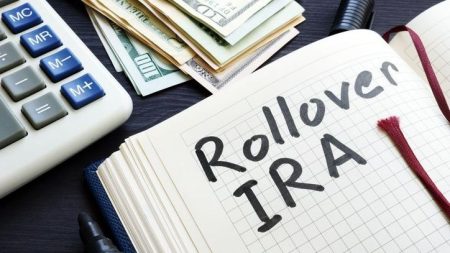Converting 401(k) funds into Roth accounts can reduce or eliminate the need to take Required Minimum Distributions (RMDs) that can bump you into a higher tax bracket in retirement. Voluntary Roth withdrawals, meanwhile, are tax-free, potentially giving the conversion strategy twice the appeal. Converting 401(k) funds gradually, before you’re required to take RMDs at age 73, is one way to manage and reduce the tax bill for the conversion. Converting $100,000 a year starting at age 62 likely won’t be enough to completely empty your 401(k)s, but will mean much smaller mandatory withdrawals. However, there are a lot of factors to consider, many of which we’ll review the potential implications of below.
A financial advisor can help you run the numbers to determine which strategy is most likely to help you achieve your financial objectives. Get matched with a fiduciary advisor for free.
Examples of Roth Conversion Strategies
To decide whether or not to do a Roth conversion, start by considering your future likely income and income tax bracket in retirement. If your tax bracket will probably be higher in retirement, the conversion may make sense. Otherwise, it may not. However, there are a number of additional considerations to keep in mind.
Taxpayers use a number of ways to approach conversion. The simplest — although maybe not the cheapest — is to immediately convert the entire $1.1 million in both of your 401(k) accounts to a Roth account. This will allow your Roth funds to grow tax-free and avoid any future worries about RMDs or taxable withdrawals. The problem is that a conversion of that size will result in a large current tax bill.
Assuming you have combined taxable income of $90,000, converting $1.1 million from a 401(k) to a Roth in a single year would result in taxable income of $1,190,000 and a federal tax bill of approximately $395,612 using the 2023 marginal income tax brackets for married taxpayers filing jointly. Bear in mind, it may be undesirable to pay conversion tax bills with converted funds, because it makes much more sense to leave them in an account where they can grow tax-free. So, you’ll likely want to only do this all-at-once conversion if you can pay the taxes with funds from other sources.
Another option would be to do a gradual conversion. If you convert $100,000 per year, that plus your $90,000 in other taxable income will put your combined income at the top of the 22% marginal tax bracket and result in an estimated tax bill of $39,008 each year. This is likely more manageable, especially considering that you’ll probably prefer to pay the taxes with funds from other sources so the funds in your retirement accounts can grow tax-free.
At 62, you have 11 years before you’ll have to start taking RMDs. You could in theory convert $1.1 million during that span of time by converting $100,000 per year. However, since the remaining funds in your 401(k) will be growing from investment earnings, that won’t empty your 401(k). Assuming 7% average annual earnings, after 11 years of this gradual conversion strategy you’ll have $657,293 left in your 401(k) accounts. Using the IRS tables for calculating RMDs, your first-year mandatory withdrawal will be approximately $24,803.
That’s much less than you’d have to withdraw without the conversions, however. Otherwise, you can adjust your conversions throughout the years to fully empty the account.
Other Conversion Considerations
Since you have multiple 401(k)s, you might consider converting one and not the other or converting them at different rates. Because RMDs are calculated based on the total amount in your retirement accounts, however, this would not make any difference unless you were to file your tax returns as a married couple filing separately. Generally speaking, it’s more advantageous for married couples to file jointly, although there are exceptions.
Some exceptions include anticipated changes in your marital status or differences in one partner’s student debt load. Business ownership may also play a role. For example, many of the married couples that file singly are doing so in spite of the tax disadvantages because they are in the process of divorcing. If a couple files singly, that means they are individually rather than jointly responsible for any taxes they owe and the accuracy of any information provided on their returns. When couples are divorcing, this is often seen as preferable regardless of the tax consequences.
When one partner has sizable student loans, it may make sense to file separately if the size of the student loan payment is based on income and the couple’s combined income would require a larger monthly payment than if only one partner’s income were used. If one partner owns a business, filing singly may maintain the owner’s ability to claim the Qualified Business Income deduction, a significant tax benefit.
Bottom Line
Converting $1.1 million in 401(k)s to a Roth account can help avoid RMDs and allow for tax-free withdrawals in retirement. Converting $100,000 a year starting at age 62 won’t be enough to completely empty your 401(k)s, but will mean much smaller mandatory withdrawals. You’ll likely be better off if you can pay taxes on the conversions with funds from other sources, rather than using converted funds for this purpose.
Tips
- Deciding whether and how to convert funds from a pre-tax retirement account such as a 401(k) to a Roth account calls for doing some what-if scenarios. A financial advisor can help you set up these models. Finding a financial advisor doesn’t have to be hard. SmartAsset’s free tool matches you with up to three financial advisors in your area, and you can interview your advisor matches at no cost to decide which one is right for you. If you’re ready to find an advisor who can help you achieve your financial goals, get started now.
- Use SmartAsset’s Retirement Calculator to see how well you’re doing saving for retirement.
- Keep an emergency fund on hand in case you run into unexpected expenses. An emergency fund should be liquid — in an account that isn’t at risk of significant fluctuation like the stock market. The tradeoff is that the value of liquid cash can be eroded by inflation. But a high-interest account allows you to earn compound interest. Compare savings accounts from these banks.
Photo credit: ©iStock.com/triloks
Read the full article here
















